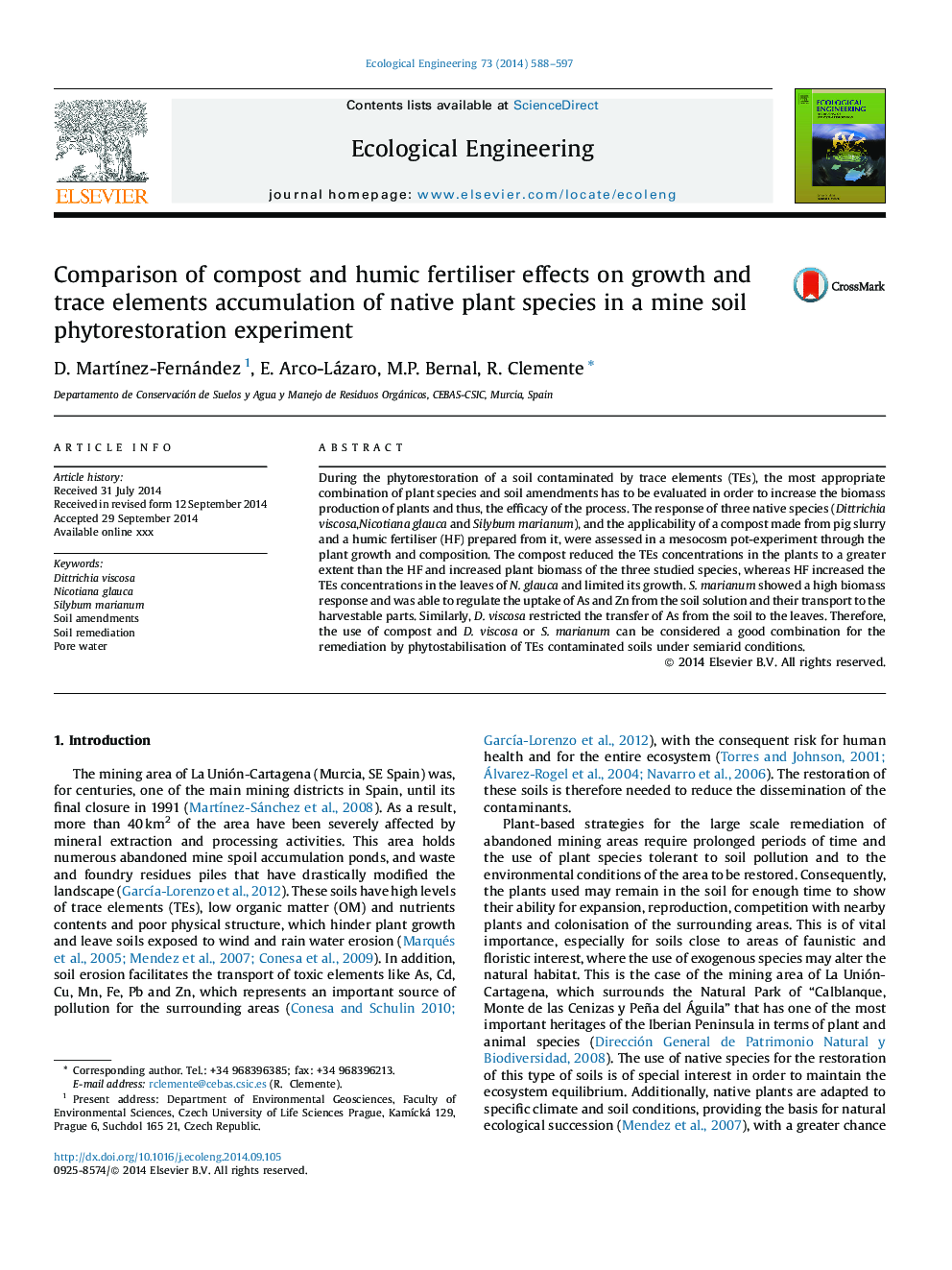| Article ID | Journal | Published Year | Pages | File Type |
|---|---|---|---|---|
| 6302022 | Ecological Engineering | 2014 | 10 Pages |
Abstract
During the phytorestoration of a soil contaminated by trace elements (TEs), the most appropriate combination of plant species and soil amendments has to be evaluated in order to increase the biomass production of plants and thus, the efficacy of the process. The response of three native species (Dittrichia viscosa, Nicotiana glauca and Silybum marianum), and the applicability of a compost made from pig slurry and a humic fertiliser (HF) prepared from it, were assessed in a mesocosm pot-experiment through the plant growth and composition. The compost reduced the TEs concentrations in the plants to a greater extent than the HF and increased plant biomass of the three studied species, whereas HF increased the TEs concentrations in the leaves of N. glauca and limited its growth. S. marianum showed a high biomass response and was able to regulate the uptake of As and Zn from the soil solution and their transport to the harvestable parts. Similarly, D. viscosa restricted the transfer of As from the soil to the leaves. Therefore, the use of compost and D. viscosa or S. marianum can be considered a good combination for the remediation by phytostabilisation of TEs contaminated soils under semiarid conditions.
Keywords
Related Topics
Life Sciences
Agricultural and Biological Sciences
Ecology, Evolution, Behavior and Systematics
Authors
D. MartÃnez-Fernández, E. Arco-Lázaro, M.P. Bernal, R. Clemente,
